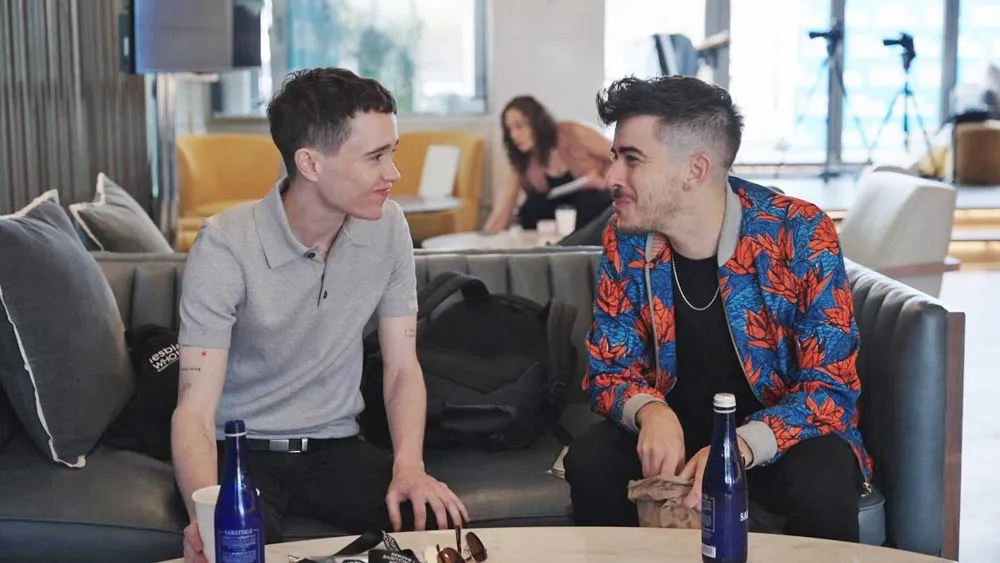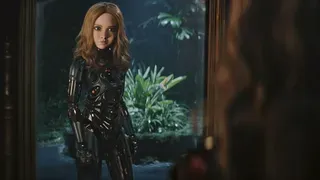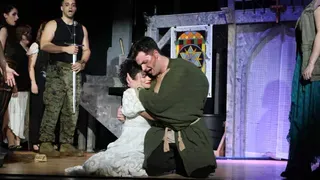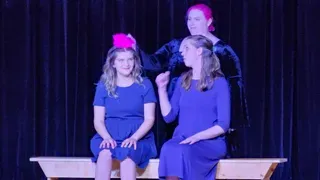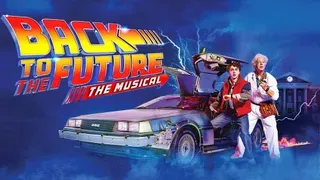October 21, 2015
Heart of A Dog
Kilian Melloy READ TIME: 4 MIN.
The work of performance artist and musician Laurie Anderson is marked by a curious combination of innocent curiosity and piercing intellect. Years ago, in one piece, Anderson related how, shortly after the Berlin Wall came down, she entered East Berlin and heard what she thought sounded like a riot. She instantly decided to go check it out -- because, as she put it, "I'm always up for a riot." What she saw was a mob of people swept up in a shopping frenzy. So much for the high ideologies of freedom.
Anderson's stories come across like accounts of her dreams; largely independent of setting, they often center around dreamlike situations and follow a sort of dream logic. Anderson's music (especially her earlier work) often possess a primal, urgent feeling, which, contrasted with her calm, disembodied vocal delivery, generates a sense of floating above, rather than participating in, the stories she tells.
To that end, Anderson's usual vocal mode isn't a matter of singing, but rather of slow, querulous, sometimes sing-songy speaking. (She once described a portion of one show as "the difficult listening hour" -- a cheeky parody of the "easy listening" on commercial radio.) It's not that her work is cacophonous; it;s often quite lovely, Rather, her pieces tend to engage the brain in a kind of detached overdrive. Her texts muddle politics, history, literature, science, and off-the-wall stories; in one early work titled "Walking and Falling," for instance, Anderson delivered a mini-lecture on how the process of walking is actually a controlled form of falling.
That's as good a way as any of summarizing what it's like to listen to a Laurie Anderson album, or to view her 1986 concert film "Home of the Brave." Anderson has a way of leading to the brink, over and over again, only then to flit off to some other thought -- which may or may not be directly related to the one she was expressing a moment ago. The effect to be towed along behind her through a Sargasso Sea of concepts.
So what would a feature film by Laurie Anderson look like? If she were to mash images together into a verbally sculpted framework the way she does sound, would the result be pleasing to eye -- or utterly unmanageable?
Anderson does have a film now. It's called "Heart of A Dog," and judging from how it's turned out, its visual palette is striking, mesmerizing, and tedious by turns.
The movie is all about mortality and death; this is understandable, given that her husband, rock and roll icon Lou Reed, passed away two years ago. But Anderson doesn't talk about Reed; if anything, his mark on the film is notable for its spectral lightness. He's glimpsed in a home movie, along with Anderson herself, as the two enjoy a beach; his song "Turn Time Around" plays over the end credits; and Anderson supplies a dedication to him.
Instead, Anderson talks about her rat terrier, Lolabelle -- a clever dog, one who paints and plays piano, and who (or so Anderson claims) maintained a Facebook page Anderson knew nothing about. Dogs and New York City and 9/11 form the movie's early focus, with Anderson making dubious connections between the blues and greens to which a dog's color perception is limited, and the greenish tinge of security camera footage. Such cameras are now ubiquitous in our post-9/11 world, a world where terrorists can swoop down from the sky at any time to create havoc and panic, much the way hawks menaced Lolabelle during long walks in the country.
How New York is the movie? Anderson's neighbor, the painter Julian Schnabel, appears on Lolabelle's terrier-cam. Also, it turns out that Lolabelle has her own accounts at several pet shops around the neighborhood -- where else but New York could such a thing be thinkable?
But Anderson slowly drifts into more personal terrain, talking about her mother's death and her own childhood brush with paralysis after breaking her back in an accident. Again, it seems curious that Reed never enters the narrative; Anderson almost seems to be talking around his death, and she's not shy about offering some startling confessions, such as struggling with her mother's impending death and wanting to visit, but not being sure she ought to, because "I didn't love her." Anderson's innocent affect can carry quite a sharp edge.
The narration is done in the usual ginger, almost monotone, Laurie Anderson intonations and oddball phrasings; you sometimes feel as though you were being put under by a hypnotist. Anderson herself doesn't appear in the frame, except in one or two brief snatches, as with that momentary glimpse of her and Reed on the beach. Instead, we see her at the outset as an animated figure -- Anderson herself does the film's drawings and animations, and she's a gifted artist -- her lips moving right along to her voice on the soundtrack. After that, what we see are highly processed photos, slickly produced film segments, and old home movies that have been slowed down to barely-flickering life. Many of these images are processed, enhanced, and denatured within a millimeter of their lives. Some aren't; restful footage of snow falling among a stand of trees takes on exceeding beauty, but many snippets of video are simply random, or visually and emotionally flat.
That's where Anderson's patter must pick up the slack, and it often does. Her musings are highbrow: Wittgenstein, Kierkegaard, and Goya are all referenced, and contemporary concerns are contrasted, with some humor, against historical trends. A massive new Homeland Security data storage center in the Utah desert flashes up, only to be compared with the Great Pyramids. The lives of the mighty once were the only lives that were documented, Anderson notes; now the mighty rise above it all while it's the lives of us nobodies that are under constant scrutiny.
What does all this tell us about...well, anything? Somehow, "The Tibetan Book of the Dead" figures into Anderson's trajectory, which is fitting given the overall theme. The film is emotionally raw, and textually impenetrable. Finally, questions of life and death and childhood mishaps fall away, leaving us with the burning question: Do you suppose...Laurie Anderson...sounds like that...in everyday...conversation -- ?
Kilian Melloy serves as EDGE Media Network's Associate Arts Editor and Staff Contributor. His professional memberships include the National Lesbian & Gay Journalists Association, the Boston Online Film Critics Association, The Gay and Lesbian Entertainment Critics Association, and the Boston Theater Critics Association's Elliot Norton Awards Committee.
